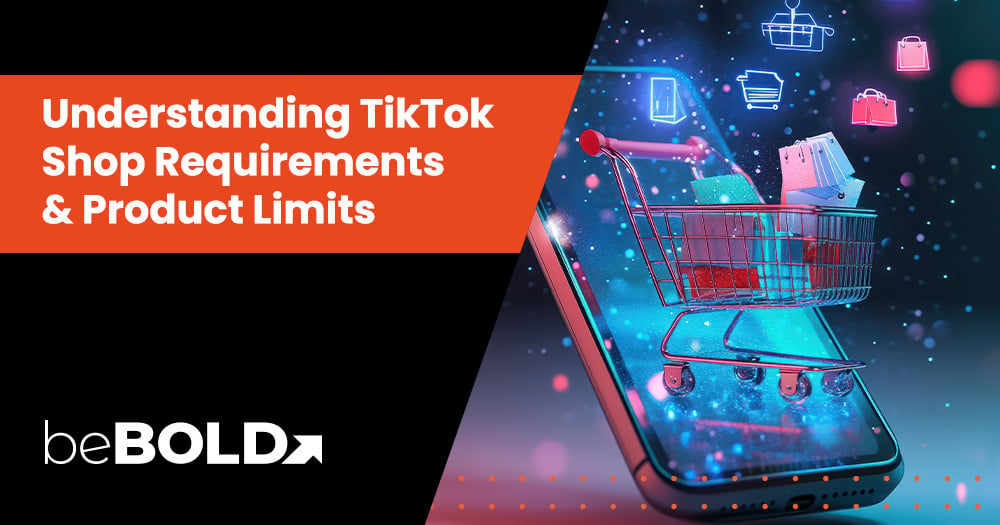Amazon Attribution Program – Get A Deep Insight Of Your Off-Amazon Ad Campaigns
Everyone knows that Amazon encourages sellers to bring external traffic to their product listing pages. However, most advertisers who run off-Amazon campaigns face a common and significant issue: how to measure the performance of those campaigns, including total sales. They have the data for when a customer clicks on the ad and reaches Amazon. But no one knows what happened after that. Did the customer purchase or leave? The launch of the Amazon Attribution program has answers to all such questions.
Amazon Attribution – The What, When & How?

What: Amazon Attribution Beta is a self-service, web-based program that helps you to measure your advertising performance across different media platforms off Amazon. This advertisement measuring solution allows advertisers to get a deep insight into how their off-Amazon traffic generation activities and marketing tactics are contributing to shopping activity. These insights can help advertisers optimize their media campaigns and grow their sales.
When: Just like every time, Amazon has once again silently rolled out this new feature in 2017. It is in beta version, and Amazon is constantly making updates in this program with time and feedback from sellers.
How: This program is invite-only; however, it is also available to the 1P vendors and brand-registered 3P sellers in the US, with limited availability in the UK. Sellers need to request access by submitting a form on their website. Enrollment is on a first-come, first-served basis. Click here to Sign Up.
Some more information on the program:
- No additional fees are needed for this program
- There are no minimum spending thresholds
- Cross-device data tracking on computers, phones and tablets is available
- A 14-day attribution lookback window is used
- Tags may be utilized in direct sites as well
- Amazon's attribution program can only be used to get insights into non-Amazon advertising media.
- Sales reporting will show the total regardless of whether a Third Party or Vendor earns it.
What are the Eligibility Criteria for Using Amazon Attribution?
Amazon Attribution is a tool that helps you understand how your marketing efforts contribute to Amazon sales. To use Amazon Attribution, you must meet the following eligibility criteria:
- Amazon Seller or Vendor Central Account: You must have an active Amazon seller or vendor central account. This means you must be selling products on Amazon either directly or through a third-party seller.
- Registered for Amazon Attribution: You need to register for Amazon Attribution within your Seller or Vendor Central account. This process involves providing some basic information about your business and marketing channels.
- Supported Marketing Channels: Amazon Attribution currently supports tracking from the following channels:
- Paid Search: Google Ads, Microsoft Advertising, Amazon Ads
- Social Media: Facebook, Instagram, Twitter, LinkedIn, Pinterest
- Display Advertising: Google Display Network, Criteo, Taboola, Outbrain
- Email Marketing: Mailchimp, Constant Contact, AWeber
- Affiliates: Amazon Associates, Commission Junction, ShareASale
- Ad Spend Threshold: There may be a minimum ad spend threshold required for some marketing channels. This varies by region and channel, so it's essential to check the specific requirements for your location and chosen channels.
- Technical Requirements: You may need to implement tracking pixels or tags on your website or marketing campaigns to track clicks and conversions. Amazon Attribution provides detailed instructions and support for this process.
- Data Privacy Compliance: Ensure your data collection and usage practices comply with all relevant privacy laws and regulations, such as GDPR and CCPA.
How Amazon Attribution Works?
The best thing about this program is that advertisers can finally track the traffic coming from off-Amazon sites like Facebook or Google back to Amazon to purchase. It brings together sales and shopping impact analysis across off-amazon promotion through social media, emails, search, and display ads. But how does Amazon track the customer's purchase journey? It is powered by a standard 1 x 1 image impression pixels on the advertisement that works as a tracker and tracks the impressions, clicks, and conversions. The pixels measure the impressions and clicks and then attribute the conversation to your campaigns.
Amazon attribution tracks the following metrics:
- Amazon Detail Page Views
- Purchase Rate
- Sales
These metrics give advertisers a deep understanding of each stage of the customer journey, which helps them determine the activities that drive performance so that they can optimize campaigns to improve ROI and increase sales on Amazon.
Apart from these, there are two conversion metrics available:
- Promoted Promotions: Conversions for specific ASINs you have selected.
- Total Conversions: Conversions for specific ASINs you selected, as well as other ASINs related to those products that fall under the same brand (like brand Halo).
According to Amazon, Amazon Attribution can attribute conversions for display, video and search for media purchased outside of Amazon. For display and video advertising, impression tracking is done through the 1 x 1 image impression pixel to impression events on the ad. Click tracking can be done by replacing an ad's original URL with a click redirect URL. For search advertising, Amazon generates a tracking template when you generate a pixel from a line item corresponding to a search publisher.
Amazon Attribution Gives Brands The Opportunity To:
#1: Measure The Impact Of Their Strategies:
The insights into your advertising campaigns and the ability to track traffic and conversations from multiple sources allow the brands to measure the impact of their off-Amazon promotion efforts through the advertising console. For example, if you are using Google Adwords for promotion, the data stops when the customer reaches Amazon. However, with the Attribution program, the brands can measure and track a customer's shopping journey from an off-Amazon platform to Amazon. Once the data is reviewed, an optimal conversion path is identified, and future marketing strategies can be optimized to cater for an ideal customer journey.
#2: Increase ROI
With accurate conversion data in hand, brands can quickly identify the most efficient and effective advertisement platform to see the full picture and further optimize their campaigns to increase their ROI. At present, without Amazon Attribution, brands are not able to identify the true impact of their efforts, so obviously, there is little opportunity to scale the efforts. Without inaccurate data, assigning a budget and setting bids to a campaign is challenging, but accurate data can make all that a lot easier, which, in turn, increases ROI.
#3: Improve The Market Share
Effectively tracking and bringing interested traffic to your product detail page can help fill the market gaps and shorten the path of customers so that they can discover your product quickly. Because the traffic you are getting is already looking for your product, it will positively impact the organic ranking and conversion rates. This, in turn, increases your product visibility and also positively impacts your existing PPC campaigns.
Case Study: How Effective Is the Amazon Attribution Program?
The only tracking option available to professional sellers and vendors for measuring sales and performance data is through their Amazon Storefront. Despite being very useful and efficient, it has some major limitations, like not being able to aggregate sales by single ASINs. Amazon Attribution program gives them complete insight and allows them to track attribution back to a product detail page, making this program a much more robust option compared to Amazon stores.
Amazon provided a case study of a nutrition company named Premium Nutrition that increased its year-over-year sales by 322% by optimizing its attribution through Amazon Attribution. The insights they gained from analyzing the attribution included which type of publication performs better than others, what audience is more likely to convert and which media placement will provide greater returns. Using these insights, Premium Nutrition made strategic adjustments to its campaign to increase sales and improve ROI.
Why is External Traffic So Important?
External traffic is essential for driving Amazon sales and building brand visibility. By directing potential customers to your Amazon product pages from external sources, you can differentiate your products from competitors and increase brand awareness. Additionally, leveraging external traffic can significantly boost your Amazon sales and establish a strong brand presence on the platform. Let's dig deeper into the importance of external traffic.
Reason #1: Get An Edge Over Customers
With more and more sellers jumping on the selling bandwagon, it becomes difficult for your product to stand out. Distinguishing your products from a pool of similar products becomes next to impossible, and you have to fight to get your products seen by customers. By driving external traffic, you are getting a competitive edge over your competitors. Your product will be seen first on its own.
Reason #2: Brand Awareness
A recognizable and strong brand can go a long way. While you advertise outside of Amazon, you can use beautiful creatives and build a brand voice that stays with the audience for a long time. More and more customers will see your brand, and this will increase brand awareness.
Reason #3: Amazon May Reward You
Nothing has been proven until now, but many sellers and Amazon SEO experts believe that Amazon rewards sellers who bring external traffic to their detail page. If we think practically, it might be possible. When you bring external traffic, you are helping Amazon increase its customer base, and this might help you build a strong relationship with Amazon.
Key Strategies for Driving External Traffic:
- Utilize brand registry to protect your brand and enhance its visibility.
- Leverage Seller Central to manage your Amazon advertising campaigns and track performance.
- Utilize attribution links to track the effectiveness of your external traffic sources.
- Consider using KDP authors to create and distribute digital content that can drive traffic to your Amazon products.
- Implement effective digital marketing strategies, such as social media advertising and content marketing.
- Use analytics measurement solutions to track the performance of your external traffic campaigns and make data-driven decisions.
- Explore the Amazon ads API to automate your advertising efforts and optimize your campaigns.
- Consider using bulk upload tools to efficiently manage your product listings and inventory.
Setting Up Amazon Attribution
Amazon Attribution Measurement is a powerful tool that helps marketers track and measure the effectiveness of their advertising campaigns across various Amazon channels, including Amazon products and Amazon listings. By understanding how customers discover and interact with your products on Amazon, you can optimize your campaigns for better results. Let's walk you through the process of setting up Amazon Attribution, from creating an account to using the attribution tag.
Step 01: Sign Up and Log In:
- Fill out the signup form and create an Amazon Attribution account.
- Log in to your account to access the platform.
Step 02: Match Products to Campaigns:
- Navigate to the "Products" section.
- Click on the relevant advertiser's name.
- Choose "New order."
- Select the "Set up an order" parameter.
- Search for and add the desired product.
- Give the attribution tag a name and external ID.
- Select the placement platform (e.g., Facebook, AdWords).
- Paste the product URL.
- Click "Create."
Step 03: Create an Attribution Tag:
- Access the "Create Campaign" section.
- Choose your creation method (manual or bulk).
- Name your new campaign and select the product.
- Create a new ad group, specifying name, publisher, channel, and destination URL.
- Click "Create."
Step 04: Use the Attribution Tag:
- Copy the generated attribution tag.
- Paste the tag into the appropriate URL parameter in your external marketing campaign (e.g., Facebook Ads, Google Ads).
Best Practices and Strategies for Amazon Attribution
Once you've successfully set up Amazon Attribution, it's essential to implement effective strategies for using social media posts along with Amazon Attribution to maximize the value of your data. This section will explore best practices for using Amazon Attribution to gain deeper insights into your Amazon marketing efforts and customers' behavior, optimize your campaigns, and ultimately drive sales. By following these guidelines, you can make data-driven decisions to improve your ROI on Amazon advertising.
Understanding the Core Metrics of Amazon Attribution
To effectively utilize Amazon Attribution, it's crucial to grasp its key metrics:
- Clicks: The number of times users click on your ads and are redirected to Amazon.
- Impressions: The number of times your ads are displayed to potential customers.
- Click-Through Rate (CTR): The percentage of impressions that result in clicks.
- Conversion Rate: The percentage of clicks that lead to desired actions (e.g., purchases, add-to-cart).
- Cost Per Acquisition (CPA): The cost of acquiring a customer through a specific marketing channel.
Setting Up Amazon Attribution Tags for Optimal Tracking
- Accurate Placement: Ensure that attribution tags are correctly placed on your marketing campaigns to accurately track customer journeys.
- Unique Tags for Different Campaigns: Use unique tags for each campaign to track their individual performance.
- Regular Tag Verification: Periodically check the placement and functionality of your tags to avoid tracking errors.
Leveraging Amazon Attribution for Cross-Channel Insights
- Identify High-Performing Channels: Determine which marketing channels are driving the most conversions and customer value.
- Optimize Channel Allocation: Allocate your marketing budget to channels with the highest ROI.
- Identify Synergies: Discover how different channels work together to influence customer behavior.
Using Attribution Data to Optimize Campaign Performance
- A/B Testing: Experiment with different ad creatives, targeting options, and bidding strategies to identify the most effective approaches.
- Keyword Optimization: Refine your keyword targeting based on attribution data to reach the right audience.
- Bid Adjustments: Adjust your bids for different keywords and ad placements to maximize ROI.
Best Practices for Analyzing Conversion Paths with Amazon Attribution
- Multi-Touch Attribution: Consider using multi-touch attribution models to understand the impact of multiple marketing touchpoints on conversions.
- Customer Journey Analysis: Map out typical customer journeys to identify key stages and optimize your marketing efforts accordingly.
- Data Visualization: Use visualizations like graphs and charts to better understand your attribution
Turn to Be Bold Digital for All Your Amazon Queries and Solutions
Are you looking to dominate the Amazon marketplace? Be Bold Digital is here to help you achieve your goals. As your trusted Amazon advertising partner, we offer a comprehensive range of services tailored to your specific needs. From campaign optimization to data analysis, our experts provide expert guidance to ensure your success.
Why choose Be Bold Digital?
- Proven Expertise: Our team has a deep understanding of Amazon's algorithms and best practices.
- Data-Driven Approach: We leverage advanced analytics to identify opportunities for growth.
- Customized Strategies: Our solutions are tailored to your unique business objectives.
- Results-Oriented Focus: We are committed to delivering measurable outcomes.
Let's grow your Amazon business together!
Contact Be Bold Digital today to schedule a consultation and learn more about how we can help you achieve your goals.
Conclusion
All in all, this is a great program, and it has opened up many opportunities for brands to get the insight needed to scale their marketing strategies and increase sales on Amazon. By introducing this program, Amazon has created an ad feature that no other ad platforms are offering. You can also leverage this program and get benefits for your off-amazon ad campaigns.
FAQs
What is Amazon Attribution, and how does it work?
Amazon Attribution is a powerful tool that helps marketers track the customer journey on Amazon to understand how their advertising campaigns are driving sales. It provides insights into which marketing channels and tactics are most effective in influencing customer decisions. By attributing conversions to specific touchpoints, you can optimize your advertising strategies for better results.
Who is eligible to use Amazon Attribution?
Amazon Attribution is available to sellers and vendors who are actively advertising their products on Amazon. This includes those using sponsored products, sponsored brands, and other advertising channels.
Is Amazon Attribution free to use?
Yes, Amazon Attribution is a free tool provided by Amazon. There are no additional costs associated with using it.
How do I set up Amazon Attribution?
To set up Amazon Attribution, you'll need to create an account and link it to your advertising campaigns. Once linked, Attribution will start tracking customer interactions and attributing conversions to the appropriate touchpoints.
Can Amazon Attribution track conversions from all traffic sources?
While Amazon Attribution is primarily designed to track conversions from Amazon advertising channels, it can also track conversions from other sources if those customers have previously interacted with your brand on Amazon. This includes organic search, direct traffic, and social media. However, its effectiveness in tracking conversions from non-Amazon sources may vary.







Comments